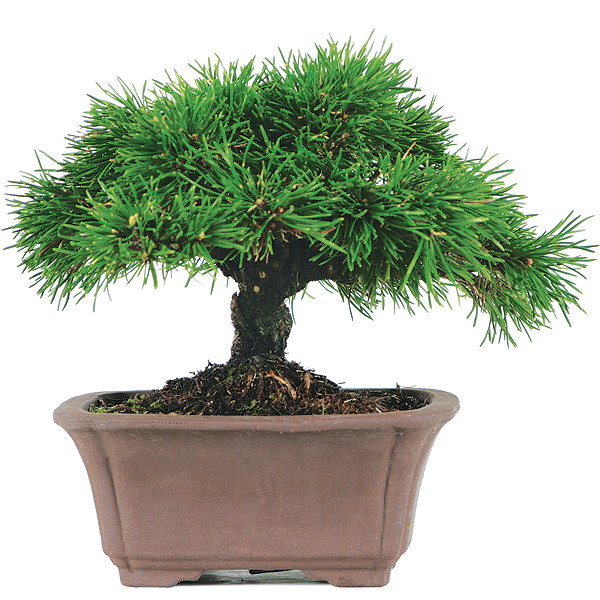
General Background:
The Dwarf Mugo Pine is native to the high elevations of the mountain regions of Central and Southern Europe. It was first introduced into Denmark in 1798 and became widely grown in Europe commercially since 1860. It has been used to stabilize coastal sand dune areas in Europe. This slow growing plant is easy to grow and easy to care for making it a great choice for any bonsai enthusiast.
Trees Features:
The Dwarf Mugo Pine, or Pinus mugus ‘Mops’ has small dark green needles which grow slowly and are very easy to maintain. Being an evergreen, this bonsai looks great throughout the year. This bonsai will provide an experience that is perfect for beginners because it is a very low-maintenance bonsai with a hearty constitution.
Temperature:
This bonsai will enjoy living outdoors with adequate protection from extreme heat and cold. If left outdoors, though it tolerates freezing temperatures well, ample root protection should be provided; and if brought inside, attention must be paid to humidity requirements and protection from the dry conditions of indoor heating should be provided.
Lighting:
Mugo pine trees can be grown outdoors in partial shade to full sun. When indoors they will do well in bright light, but can also tolerate diffused light from a southern facing window.
Watering:
The drought tolerance of the Mugo Pine will be especially appreciated in warmer climates and by the frequent traveler. Since their roots grow close to the surface, it is a good idea to offer a layer of mulch around Mugo pine bonsai, to keep the roots cool and moist. It is also important to provide a good draining soil to prevent root rot. This bonsai is, as aforementioned, a drought tolerant plant, and this, combined with their tolerance of partial shade, makes them adaptable and helps account for how popular these plants are when growing bonsai.
Fertilizing:
This bonsai will do well to have a monthly feeding regime of a diluted organic fertilizer specific to evergreens.
Pruning / Training:
Initial pruning should be carried out at the same time as repotting. Subsequent pruning can be carried out when wiring in the fall. Pinch by shortening new shoots, also called candles, by two thirds in the spring, before the needles open. You will want to pinch the candles in two stages, pinching the most vigorous candles first and a week later pinching the weaker candles. In the fall, reduce the number of buds on each branch to two to encourage ramification. In the fall, you will want to thin the needles by removing any needles that are too long or that are growing downward. It is best to thin more at the peak of the tree and less as you work down the tree. This will allow light to reach the lower branches and will slow the growth of the apex. Wiring should be done in late fall or early winter, and the wire removed 6-8 months later at most checking monthly to ensure that the wire doesn’t damage the bark. This tree looks best when a natural shape is kept.
Insects / Pests:
Mugo pine trees are virtually maintenance-free and are extremely resistant to insects and disease.
Propagation:
Plant seeds in the fall in moist soil. This process takes quite a long time, but is the most successful way to propagate.
Repotting:
Repot In early spring or late summer, every 2-3 years for young specimens and every 3-5 years for older ones. All Pines need deep, well drained soil, so plant in a fairly deep container filled with half coarse sand, half soil. Pines and other conifers grow in association with a symbiotic fungus that has a white web-like appearance, which grows in the root ball of the tree. If this fungus is not present, the tree may die. For this reason, pines and other conifers should never be bare-rooted, and its roots should not be over trimmed.
Additional Comments:
Be sure to keep the foliage of this bonsai free from dust to ensure proper cell growth.
DISCLAIMER: The content provided in this article is not warranted or guaranteed by Bonsai Outlet. The content provided is intended for entertainment and/or educational purposes in order to introduce to the reader key ideas, concepts, and/or product reviews. We are not liable for any negative consequences that may result from implementing any information covered in our articles or tutorials. Happy bonsai gardening.


